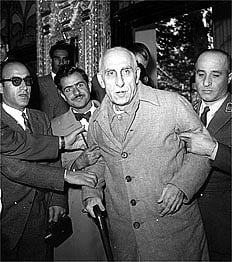
At the NATO Summit in The Hague, President Trump declared that the US had achieved the end of the war by dropping bombs on Iran, just as it did in 1945 when it dropped nuclear bombs on Hiroshima and Nagasaki.
Reversing his previous stance, Trump signed a Declaration with the 31 NATO Allies denouncing “the profound security threats and challenges, particularly the long-term threat posed by Russia to Euro-Atlantic security.”
On 20 June, President Trump announced that he would take two weeks to decide whether to attack Iran or not. However, radar traces showed bombers being transferred to the Middle East.\

Consequently, during the Grand Angolo broadcast on the evening of 20 June, we predicted an imminent US attack on Iran.
This occurred approximately 24 hours later. In his address to the nation the following day, Trump stated,
“Tonight, I can report to the world that the attacks were a spectacular military success. Iran’s main nuclear enrichment facilities have been completely and utterly destroyed. Iran, the bully of the Middle East, must now make peace. If it does not, future attacks will be much bigger and much easier.”
However, Trump ignores the fact that it was Iran that started a nuclear programme in the first place.
 In 1951, Iran’s democratically elected Prime Minister, Mohammad Mosaddegh, nationalised the British company that had monopolised Iranian oil. In 1953, Mosaddegh was arrested and tried following a coup d’état organised by the CIA and MI6.
In 1951, Iran’s democratically elected Prime Minister, Mohammad Mosaddegh, nationalised the British company that had monopolised Iranian oil. In 1953, Mosaddegh was arrested and tried following a coup d’état organised by the CIA and MI6.
The US and Britain installed Shah Reza Pahlavi as guarantor of their interests.
He established a harsh, repressive regime in Iran and began the forced Westernisation of the country. During this period, President Eisenhower included Iran in his ‘Atoms for Peace’ programme. Pahlavi allocated billions of dollars to purchase a nuclear power plant from the US, which welcomed young Iranian scientists to specialised nuclear training courses at the Massachusetts Institute of Technology.
In 1974, Iran signed a $4 billion agreement with France for the construction of five nuclear reactors. Despite having signed the Nuclear Non-Proliferation Treaty in 1968, the agreement contained no mention of safeguards against the reactors being used as a basis for manufacturing nuclear weapons.
In 1979, Shah Reza Pahlavi was deposed in a popular uprising, which established the Islamic Republic under the leadership of Ayatollah Khomeini in a subsequent referendum. Once in power, Khomeini nationalised Iranian oil again, taking control away from British and US companies. The following year, with military support from the US, Saddam Hussein’s Iraq attacked Iran, sparking a bloody war that lasted until 1988.
These events, ignored or distorted by Western historiography (see The Other Side of History), demonstrate that the nuclear power attributed to the ‘Ayatollahs’ by the mainstream media was provided to the Shah’s Iran by the US and France. These countries also allowed Israel to acquire a nuclear arsenal, which remains uncontrolled to this day, as Israel is not a signatory to the Treaty on the Non-Proliferation of Nuclear Weapons, unlike Iran.
*
Click the share button below to email/forward this article. Follow us on Instagram and X and subscribe to our Telegram Channel. Feel free to repost Global Research articles with proper attribution.
This article was originally published in Italian on Grandangolo, Byoblu TV.
Manlio Dinucci, award-winning author, geopolitical analyst and geographer, Pisa, Italy. He is a Research Associate of the Centre for Research on Globalization (CRG).
Featured image: American commemorative stamp of 1955 in allusion to the program Atoms for Peace (Public Domain)
Global Research is a reader-funded media. We do not accept any funding from corporations or governments. Help us stay afloat. Click the image below to make a one-time or recurring donation.

Comment on Global Research Articles on our Facebook page
Become a Member of Global Research
Source link

